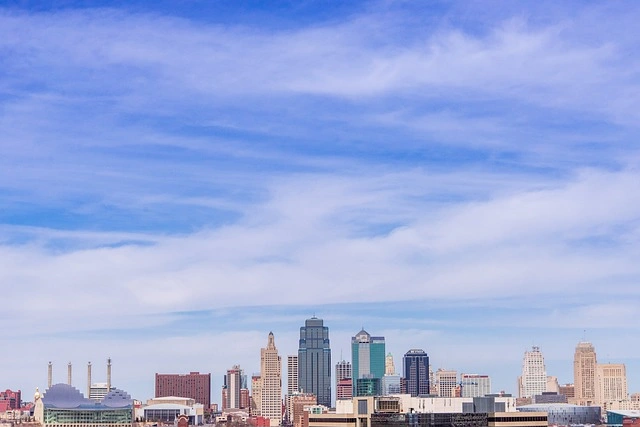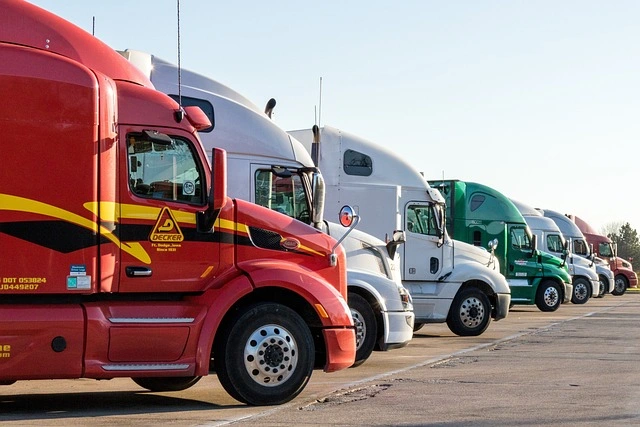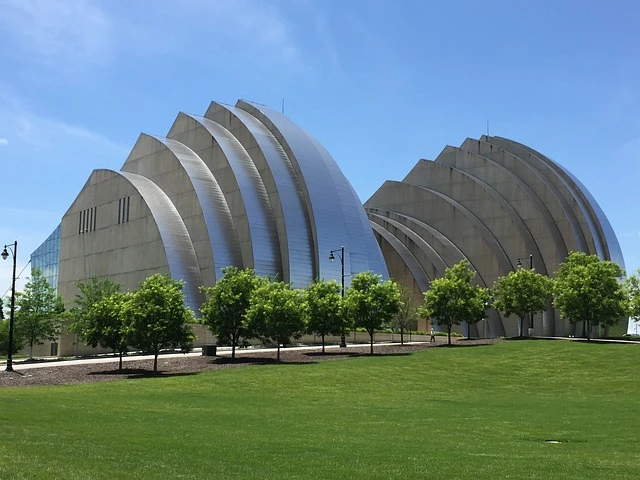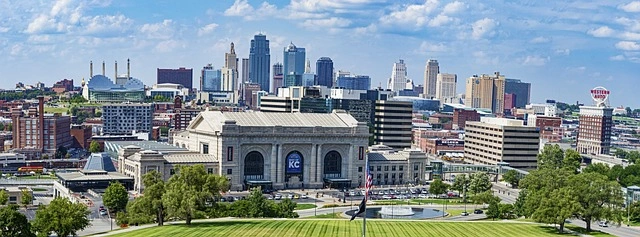Investment Properties in Kansas City

Known for its free-flowing fountains that were originally designed to water horses back in the 1800s (via Kansas City Crossroads), Kansas City, Missouri is home to over 200 fountains for onlookers to enjoy–that’s more than any other city on the planet except Rome (via NPR)! But there’s more to Kansas City, MO than expansive waterworks, especially when it comes to investing. With a steadily growing economy, good public schools, and an affordable, attainable high quality of life, there are many reasons why prospective homebuyers have been looking for Kansas City investment properties in recent years.
Where Is Kansas City?
Known as the “City of Fountains,” Kansas City is nestled on the boarder between Kansas and Missouri, at roughly 900 feet of elevation. This bi-city metropolis enjoys cultural influences from both states as well as cashflow, goods, and services.
What Is the Primary Economy in Kansas City?

Kansas City, MO is home to an economy built on many pillars of industry, which is perhaps one of the reasons why it has been relatively resilient during times of national economic struggle–such as 2008. Sometimes abbreviated to “KCMO,” Kansas City, MO enjoys a growing economy with a GDP of over 154 million dollars as of 2021 (via FRED Economic Data). Kansas City brings in most of its wealth through the healthcare industry, but there are other categories of income-generation that support the local economy as well (via Yoh).
Having an array of different avenues of wealth-generation not only increases the employability of residents but also makes Kansas City, MO more resilient in the face of potential economic downturns. Let’s take a look at a few of the main economic drivers in Kansas City.
Distribution and Transportation
Located in the “heartland,” or central U.S, Kansas City, MO lies just south of the Missouri River, making it an excellent place to distribute goods. This is why there are so many logistics centers based out of Kansas City (from KC Area Development Council), and why it offers a great opportunity for redistributing both passengers and goods. Kansas City, MO lies within the crossroads of four major national highways (I-70, I-49, I-35, and I-29), has one of the largest American railway centers, and is home to the highly-rated Kansas City International Airport. What’s more, Kansas City redistributes more traded goods than Denver, Minneapolis, and Denver.

Manufacturing
Thanks to the investment of companies like Ford and General Motors, Kansas City, MO is a major hub for manufacturing in the United States. The area does more than just automotive manufacturing, however–it is also responsible for manufacturing common plastic products as well as food and agricultural goods like milk, wheat, and meat products (via KC Area Development Council).
eCommerce
With the rising tide of online purchasing and increasing convenience in transactional affairs, Kansas City, MO becomes a natural hub for eCommerce. In fact, it only takes about two days for goods to reach most corners of the continental U.S. from Kansas City. This has created thousands of regional jobs for Kansas City residents through trusted, major corporations like Amazon, Chewy, Lowe’s, Home Depot, Walmart, and more (via KC Area Development Council).

Biosciences
From drug research and development to animal health, Kansas City, MO played a particularly crucial role during the Covid-19 pandemic, creating virus detection technology, apps for securely self-reporting illness, techniques for reducing lung damage after Covid-19, and more. Because of its central location, KCMO was able to distribute medicine and new technology rapidly to wherever it was needed–and its central role in the agrarian heartland of the U.S. makes it a key area for animal health and agricultural development as well.
Technology & Finance
There are nearly 4,000 tech companies residing in Kansas City, MO, providing thousands of jobs. Particularly prevalent are cybersecurity networks, entrepreneurs, and telecommunications experts–though the city also oversees developments in the finance sector as well. In fact, 7% of working residents secure their income through work in finance (via KC Area Development Council).
Is Kansas City Worth Investing In?

Fountain City features a strong, resilient economy built on many different sectors. But does this mean it is a good place to live, or a good place to invest? When looking at the local housing market, the affordable price point for a higher cost of living, and the classic charm of this historic area, investors are presented with a rare opportunity. Yet, whether or not it is the right one for every investor is another story. Let’s look at some of the pros and cons of investing in Kansas City, MO.
Pros
While the American coast (both west and east) have reputations for garnering wealth, culture, and being hotspots for good education, good food, music, and more, there are benefits to living in the central U.S. Some of these benefits include:
Low Unemployment Rate
According to Trading Economics, the U.S. unemployment rate in 2023 is around 3.8%, while in Kansas City, MO, the unemployment rate is currently hovering at around 3.6% (via Y Charts). With the median age hovering around 38 years (via Census Reporter) and the majority of those under 18 (from U.S. Census Bureau), there are a number of colleges and universities in Kansas City that contribute to this statistic, including University of Missouri at Kansas City, Rockhurst University, and Donnelly College.

Low Costs of Living
With home values averaging around $231,000 as of 2023 (via Zillow), the rest of the nation sits on an average home price of over $410,000 (via BankRate). Lower costs of living can improve work-to-life balance, economic status, overall health, ability to pursue higher education, family planning, and more. (For more information on the differences between Quality of Life and Standards of Living, reference this study from the National Library of Medicine.)
Rate of Growth and Expansion
With a relatively young population and a consistently increasing GDP (via FRED Economic Data), Kansas City, MO appears to be expanding both financially and in terms of population–and in fact, it was one of the only major U.S. cities to enjoy a population increase after Covid-19 (from Economic Innovation Group). The area’s resilience in the face of hardship makes it palatable to investors looking for a place to secure a rewarding investment property.

Cons
While Kansas City, MO has a lot to offer the young professional or college student, it is not necessarily the best choice for every type of investor. Downsides to investing in Kansas City include:
Centrally Located
While this can provide benefits for those employed by distribution companies, being inland can mean less economic and social influence from neighboring countries, or other ocean-related economies such as fishing. Of course, KCMO does have the Missouri River nearby–which does provide a national transportation axis for goods–but not an international one at that.
Not Unusual to Get Tornadoes and Other Natural Disasters
In fact, Kansas and Missouri experience an average of 150 tornadoes every year (via KMBC News). This is enough to make any investor hesitate and wonder if Kansas City, MO is a good location for their next investment property–or if padding their investment portfolio is better suited to other locations. Keep in mind that investors looking to procure land–without building on it–could experience issues with tornadoes if they plan to cultivate crops or raise heads cattle, pigs, sheep, or goats. However, it should be noted that cropland values are increasing in Kansas City, MO by nearly 30% (via University of Missouri).

Competitive to Get Into Good Schools for Young Families
If you are saving funds to buy into the Kansas City, MO housing market, whether you’re opting for new construction or existing structures, looking at school district zoning can have a huge affect on where young families end up. For example, Missouri ranks 40th in the nation for public high schools (via U.S. News)–and may take some expert-level planning on the parts of parents to secure spots at competitive schools for children–particularly elementary-school age children. For college students and young professionals just starting out, Kansas City, MO can be a great place to find their footing–increasing the rental market demand for this young crowd. However, for growing families with young children, KCMO may not be the best place to live during academic years.

Kansas City Real Estate Market Trends and Forecast for 2024
While the national housing market began to cool, the 2023 real estate market in Kansas City, MO continued its trend of climbing home values. With an average of 31 days on the market and a median listing price of $259,900 (via Missouri Realtors), the area continues to attract real estate investors at all stages of portfolio development.
Whether you’re new to real estate investing or are a seasoned investor, it is not hard to find a well maintained property in Kansas City, MO at an affordable rate. Savvy investors interested in local trends would be interested to know that growth is predicted to continue through the end of 2023–and all signs point to continued home value growth in 2024 (via Norada Real Estate Investments). Whether you’re looking to buy a house, a new duplex, or a one unit rental, the signs are clear: there is money to be made when it comes to rental income in KCMO (via RentCafe), whether it is with short term tenants or a long term tenant. This is especially true as most residents are the owner of their home (via U.S. Census Bureau).
Top 10 Best Neighborhoods for Investing Kansas City, MO
Platte City:
Smithville:
Kearney:
Scarritt Renaissance:
Parkville:
Briarcliffe West:
Red Bridge North:
Swope:
Hickman Mills:
Downtown Kansas City (Metro Area):

Simple, Share-by-Share Investing with Ark7
While Kansas City, MO might not provide the best investment opportunities for every prospective buyer, it can be a great place for real estate investors to expand their portfolio if they are looking to rent to college students and young professionals–or even if they’re looking for a town in which to retire. Whether you simply want to invest without the bother of property management or simply want to put your stamp on multiple doors–adding one unit, two units, or more to your list of investments–there is good sense for the right investor to look to KCMO for enriching their investment property portfolio.
New to passive real estate investing?
Like this project
Posted Sep 17, 2023
Known for its free-flowing fountains that were originally designed to water horses back in the 1800s (via Kansas City Crossroads), Kansas City, Missouri is hom…









